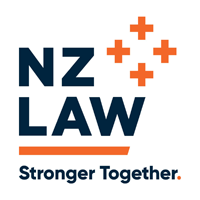Your Resources
Vital Points From The Health & Safety Legislation
Courts are imposing stiff sentences for breaches of the Health & Safety in Employment Act and employers cannot expect any leniency now that the provisions have been in place for some time and prosecutions have received wide publicity.
Some cases include:
- $125,000 fines and reparation following worker’s death. A fine of $35,000 for failing to ensure the safety of employees was imposed on an employer after a worker was electrocuted while working as a line mechanic. The company had already paid $38,000 to the family to cover expenses and had a life insurance policy of $100,000, which also went to the family. The crane company also involved was fined $15,000 and ordered to pay reparation of $30,000. The crane operator was fined $2,500 with $5,000 reparation.The Court held that the employer’s fine would have been $75,000 apart from the guilty plea, reparation already paid and previous excellent record.
- $12,000 fine for broken arm. An employer was fined $12,000 after a worker had their arm broken in four places by a conveyor belt. The company could have installed a guard or turned it off during maintenance. The hazard had been overlooked because maintenance on the conveyor belt was uncommon.
- $65,000 fine and reparation for port death. A port company was fined $15,000 plus $50,000 reparation after a port worker was killed when a mooring rope broke. The Court held that the rope was not strong enough for its purpose.
- Conviction for failing to report serious harm. An employer was convicted for failing to notify the Department of Labour of an incident where an employee suffered serious harm at work. The employee had slipped over on a wet floor and hurt their hand. A week later a fracture was diagnosed in the wrist. Even though there was no evidence of permanent damage the Court held that the employee had suffered a temporary severe loss of bodily function and therefore the obligation to report to OSH arose when the fracture was discovered a week after the accident.The High Court said that the company’s failure to report was based on a genuine (but mistaken) belief and the company was therefore convicted and discharged. The Court overturned the original $5,000 fine.
The Court went on to warn that other employers should not anticipate similar leniency, as they will have the opportunity to learn from the situation that this company found itself in.
What You Need to Know and Do
You need to know about the Heath and Safety provisions and how they will affect your business.
The major points are:
- The imprisonment penalty is up to 2 years.
- Maximum fines can be $500,000.
- Harm includes mental harm and stress.
- “All practicable steps” to avoid harm must be taken.
- Vehicles are places of work.
- Volunteers are now covered in some circumstances.
- All employees are entitled to participate in improving safety.
- Employees may refuse to do work if they believe it is likely to cause serious harm.
- Insurance against fines is illegal.
Who is Liable?
The Health & Safety in Employment Act places duties on employers, persons in control of places or plant, self-employed, principals (eg hirer of a contractor), people who sell or supply plant and employees. You can be more than one of these at a time.
Volunteers – Are They Covered?
Volunteers who do work for another regularly on an ongoing basis and the work is an integral part of the business of the other person are covered by the amended legislation. However, volunteers doing a fundraising activity (amongst other things) are excluded. Even though volunteers are exempt in certain circumstances, from the Health and Safety legislation, the Crimes Act imposes duties to take care of everyone.
Eliminate, Isolate or Minimise Harm
You must take all practicable steps to identify then eliminate, isolate or minimise hazards. This must be regularly reviewed. Keep written records of this process as proof that it was properly carried out. ” All practicable steps” now depends on the circumstances including the nature and severity of the harm, the current state of knowledge of the harm and its avoidance and the availability and cost of avoidance.
Mental Harm and Stress
Harm includes mental as well as physical and covers stress from work hazards.
An Australian security guard has been awarded $AUS1.9m against his employer for relentless and brutal bullying. The employee was found to be suffering from major depression and post-traumatic stress disorder, which meant he was incapable of working again.
New Zealand employers are responsible for providing a safe working environment for employees and this includes protection from bullying. You must have in place policies which make it clear that bullying is not tolerated and you must follow through to ensure that bullying is dealt with appropriately.
Employees Involvement in Planning
Employees must be given reasonable opportunities to participate in improving safety in the workplace. If you have 30 or more employees you must follow a set process for adopting an employee participation scheme. Employers must give some leave for health and safety training of employee representatives.
Insurance
It is unlawful to be indemnified or insured against fines under the Act. You can still insure against reparation orders and these often exceed the fines in magnitude.
The only defence to a prosecution is a total absence of fault.
If your activities are covered by the Act you must:
- Keep a register of all incidents where a person was or might have been harmed.
- Report serious harm to OSH immediately and in writing within seven days.
- Do not disturb the accident scene (except for safety reasons) if serious harm occurs.
- Provide employees with an opportunity to have input into your safety plan.
Free Safety Action Plan
We have prepared an easy to follow Safety Action Plan. If you would like a free copy then please contact me on aknowsley@raineycollins.co.nz or 0800 733 424 or check out our web on www.raineycollins.co.nz
Even if you are not covered by the Act still take all care to identify and eliminate or manage hazards so no one is hurt during your activities.








 Top
Top